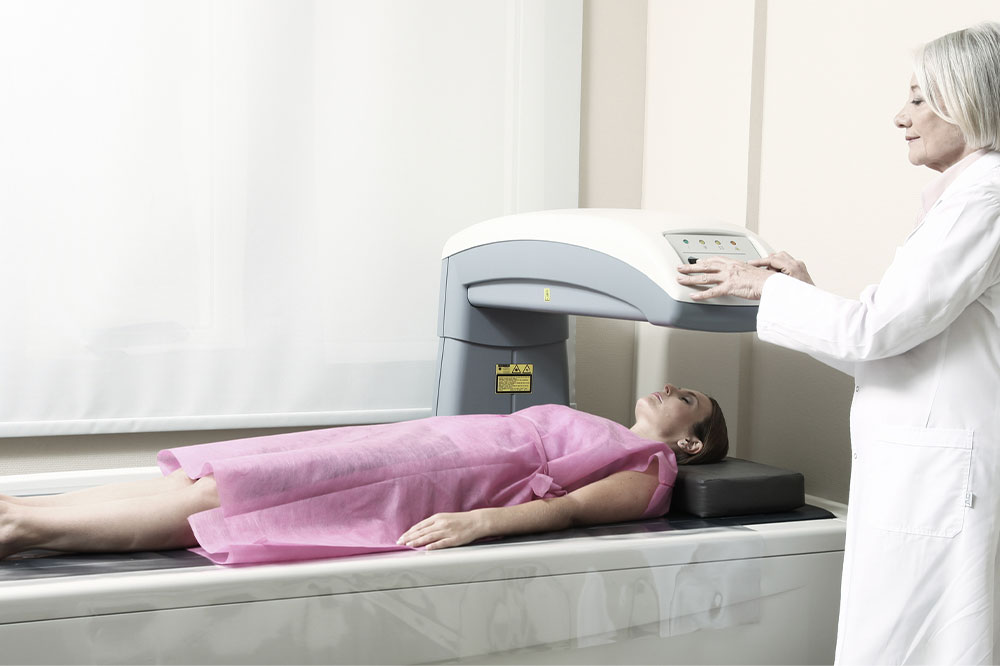
Bone density test – Procedure, costs, and more
A bone density test is a non-invasive procedure to measure the mineral content in your bones. This is used to diagnose osteoporosis, a health condition characterized by weak and thin bones. In this disease, the bones tend to break easily. Healthcare providers recommend the bone density test to determine bone strength or density. This examination is sometimes called the DEXA Scan or DXA Test. Let us detail here everything about this test, which is a painless and quick test.
Bone Density Test
A Bone Density Test measures how many grams of calcium and other essential minerals are stored in a segment of the bone. These tests are sometimes referred to as Bone Densitometry Tests or DXA by healthcare providers. This test aims to estimate the bones’ thickness or density with the X-ray’s help. The more mineral content signifies that the bones are thicker and healthier, and there is less probability of breakage.
What to expect
This test is usually carried out to examine the bones in the forearm, spine, and hip, as the bones in these areas tend to break more. Since bone density varies from one part of your body to another, technicians use two bone density tests to measure specific areas. The different kinds are briefed below:
Peripheral Test
The healthcare providers recommend this test to measure the bone density of the heels, fingers, and wrist. This costs less, but it does not help measure the thickness of bones in the spine and hips.
Central DXA
The Central DXA examines the hip and spine bones. The cost of this test is more, and it is the most accurate one. This can be performed within ten minutes. The individual needs to lie on a padded platform, wearing regular clothes, or may be asked to wear a hospital gown. There is no involvement of the injections or needles in this test. A machine arm is passed above the individual, which sends the low-dose X-rays through the body. Then, the image of the skeleton is formed.
What the result means
After the complete procedure of the Bone Density Test, the result appears in two numbers – T-Score and Z-Score. The T-Scores indicate the levels of bone health, whether normal (-1 and above), below normal (between -1 and -2.5), or at levels that point to osteoporosis (-2.5 and above). The Z-Score should not be below -2.0 as it marks less bone mass. It also signifies that it is caused by something else other than aging. So, if an individual is getting osteoporosis treatment, it is best to get this test done every one or two years.
Probable costs involved
Medicare usually covers Bone Density Tests. Certain private health insurance companies also offer insurance for people over a specific age. However, the plans may vary. So, it becomes crucial to check the terms and conditions accurately. The typical cost of this test, if the person is not covered by health insurance, is $150 to $250. It also includes a doctor’s consultation to explain the results. In addition, there will be a co-pay of $10 to $30 for the individuals covered with health insurance. There is also a coinsurance between ten and 40 percent of the total amount.
Conclusion
Even though the test uses an X-ray machine, the radiation exposure is shallow. Don’t take calcium supplements 24 hours before going for the examination. Also, inform your doctor if you had any recent procedure that involved a contrast material injection because this might interfere with the bone density check




